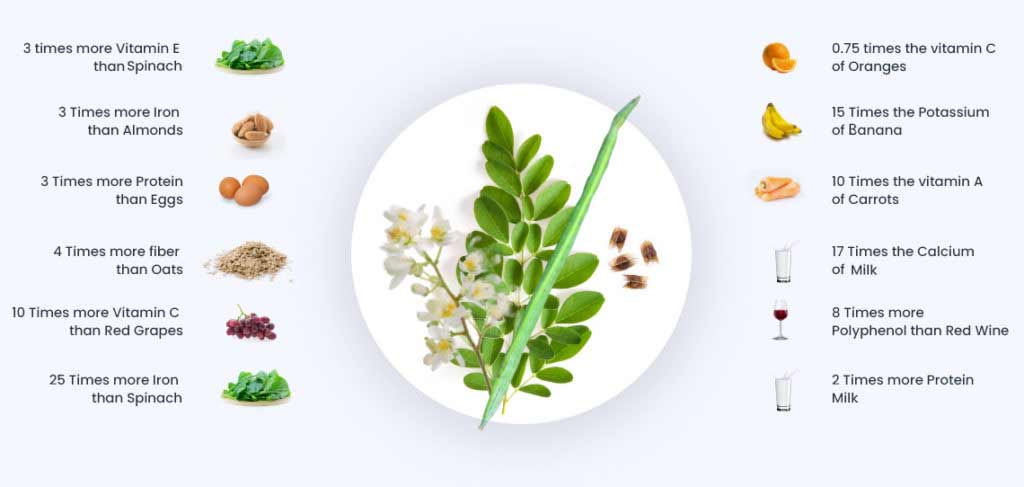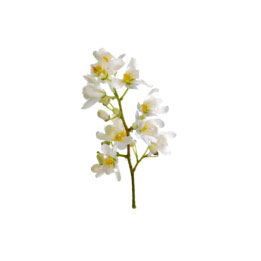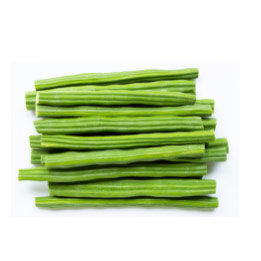
Commonly known as Drumstick tree, Moringa tree is native to South Asia and has been a part Indian diet and Ayurveda medicines since ancient times. From seeds, roots to leaves & flower, every part of the Moringa tree is power-packed with nutrients. There are about 90+ nutrients, 46+ antioxidants & 23 anti-inflammatory compounds present in Moringa. It has recently gained popularity in the western countries as a natural superfood, especially for its immune-boosting properties. It’s also getting established as the most nutritious plant in the world.
Nutritional Facts About Moringa

The Moringa Tree: Nature’s Gift to Humankind
Moringa tree is known as miracle tree and for all the right reasons. All parts of this tree are edible and jam-packed with nutrients. Let’s take a closer look at each part of this highly-nutritious tree to welcome this superfood into our lives.
Moringa Leaves :
Moringa leaves are the most versatile and nutritious part of the Moringa tree. Its powder has been a dietary staple in many South Indian households. Moringa leaves are sun-dried, crushed and grinded into a fine, green powder. This powder is easy to integrate into your usual diet to make it wholesome. From fighting common infections like cold, flu, controlling chronic diseases like diabetes, digestion disorders, to preventing conditions like Alzheimer’s, cancer, etc., daily consumption of Moringa powder does it all.

Moringa Seeds :
Moringa seeds are rich in antioxidants, vitamins, calcium, iron and essential amino acids. They are obtained from Moringa pods, to be eaten fresh, dried, fried, or roasted for various purposes. They work as a natural cleanser for body and improve indigestion. The oil extracted oil from Moringa Seeds works as a nourisher for skin and hair. It also helps people with iron deficiencies, arthritis and diabetes.

Moringa Flowers :
Moringa flowers are a great source of calcium and potassium and have been used as a natural supplement for nursing women in some parts of India from centuries. This plant is drought-resistant and all it needs is direct sunlight. Just like any other parts of Moringa, its flowers too are edible. These flowers are traditionally used in some parts of rural India for cooking, making tonic, as a fried snack, and now have become a part of the urban lifestyle as a tea flower.

Moringa Pods (Drumsticks) :
Perhaps the most famous part of the Moringa tree, drumsticks have been an integral part of Indian cuisine. This vegetable is an excellent source of oleic acid, a fatty acid, that promotes heart health. The anti-inflammatory, tissue-protective and antioxidant properties in this vegetable make it a natural immunity booster. Hence, including them in your diet once a week is a tradition worth following. Rich in calcium and iron, it is frequently included in diets of growing children and women. The aphrodisiac property in drumsticks is a time-tested remedy to improve libido and treat erectile dysfunction.
